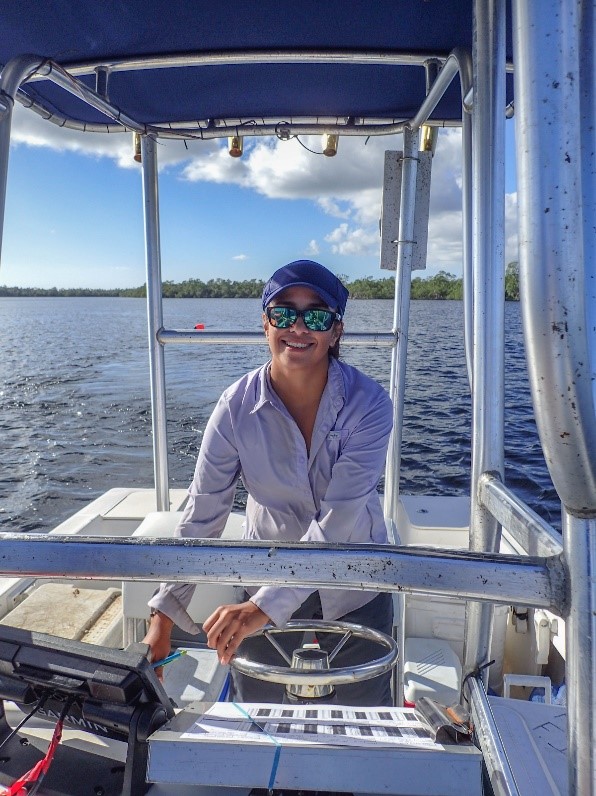Mercury contamination of watersheds, in both fresh and marine systems, is a concern worldwide. Mercury is a heavy metal that accumulates in the tissues of organisms, and as predators consume prey they end up receiving a greater amount of these pollutants over their lifetime. Marine mammals may therefore be good indicators of pollutants in certain ecosystems since they are long-lived consumers near the top of the food chain.
The bottlenose dolphin population living in the Florida Coastal Everglades ecosystem has the highest total mercury levels recorded in the world, potentially putting them at an increased risk of methylmercury toxicosis. This form of mercury poisoning causes coordination issues and neurological problems, among others. Some studies suggest that selenium may help to alleviate mercury toxicity, but there is still much that needs to be examined.

Doctoral fellow Valeria Paz, with the CREST Center for Aquatic Chemistry and Environment at Florida International University, is investigating how mercury and selenium concentrations vary in the tissues of dolphins from the Everglades. Specifically, she is looking into how the concentrations may change with age and sex of individuals sampled. By using the Bottlenose dolphin Epigenetic Aging Tool (BEAT, developed at FIU by another CREST PhD fellow), along with heavy metal analyses and other molecular tools, Paz is gaining valuable information on how this population of dolphins can withstand such high concentrations of mercury.
Her research will not only show how mercury concentrations vary with sex and age in this species, but it will also provide baseline information on what pollutant levels were like in the Coastal Everglades before changes were made to the water inputs into Everglades National Park.
The NSF CREST Center for Aquatic Chemistry and Environment (CAChE) is housed within the Institute of Environment, a Preeminent Program at Florida International University.
